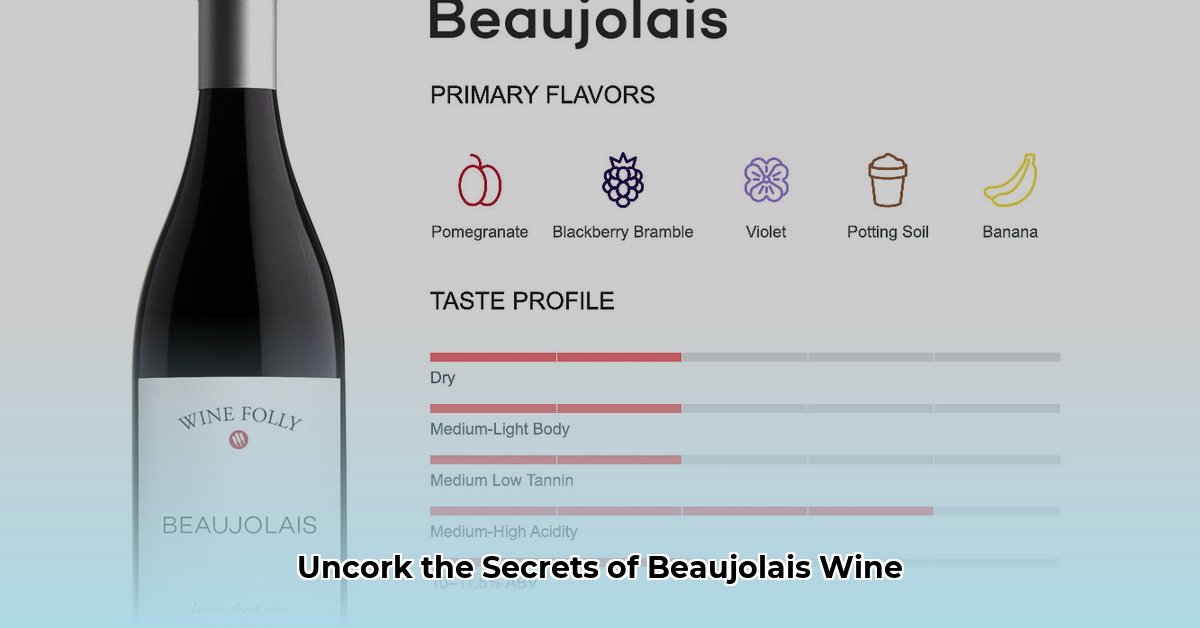So, you’re intrigued by “Bo Jalais” wine? You’re not alone! It’s a common misspelling of Beaujolais, that light, refreshing red wine from France. This guide will uncork everything you need to know about Beaujolais, from the unique Gamay grape to the diverse types and delicious food pairings. Whether you’re a wine novice or a seasoned enthusiast, prepare to discover the charm of this often-underestimated wine.
What is Beaujolais?
Beaujolais is a light-bodied red wine known for its vibrant fruitiness and low tannins, making it incredibly easy to drink. Unlike heavier reds, Beaujolais offers a refreshing, almost effervescent quality, making it a fantastic choice for casual gatherings or simply unwinding after a long day. Think bright, juicy red fruit flavors like strawberry, raspberry, and cherry, sometimes with a hint of banana or bubblegum. It’s the ultimate crowd-pleaser, offering a taste of French elegance without any pretense.
Gamay: The Soul of Beaujolais
Beaujolais is made exclusively from the Gamay grape, a variety that thrives in the granite-rich soils of the region. Centuries ago, Gamay was banished from Burgundy, just north of Beaujolais. Some historians suggest this was due to Gamay’s high yields and early ripening, which contrasted with the more structured wines of Burgundy. However, this “exile” proved to be a blessing, as Gamay found its true home in Beaujolais.
Types of Beaujolais: A Spectrum of Delight
Beaujolais isn’t just one wine; it’s a family. From the youthful exuberance of Nouveau to the elegant complexity of the Crus, there’s a Beaujolais for every occasion.
-
Beaujolais Nouveau: Released on the third Thursday of November, Nouveau is a celebration of the harvest – young, fresh, and bursting with primary fruit flavors. Think of it as a seasonal treat.
-
Beaujolais: This is your everyday Beaujolais, offering a taste of the region’s characteristic fruitiness without any fuss. It’s a reliable, go-to wine for any occasion.
-
Beaujolais-Villages: A step up in complexity. These wines, hailing from 38 designated villages, often showcase more nuanced flavors and a slightly longer finish.
-
Cru Beaujolais: The pinnacle of Beaujolais. These ten crus, each from a specific area, offer the most age-worthy and complex expressions of Gamay, with distinct personalities and aging potential.
| Cru Beaujolais | Characteristics | Aging Potential |
|---|---|---|
| Brouilly | Lightest, bright fruit and floral aromas. | 2-5 years |
| Chénas | Rarest, elegant, notes of raspberry and cherry. | 5-10 years |
| Chiroubles | Delicate, silky tannins, hint of rose. | 2-4 years |
| Côte de Brouilly | Hillside location, more structured and intense. | 3-7 years |
| Fleurie | Floral and perfumed aromas. | 3-8 years |
| Juliénas | Earthy, touch of pepper. | 4-7 years |
| Morgon | Rich and earthy, powerful structure, long finish. | 7-10+ years |
| Moulin-à-Vent | Most powerful and tannic, “King of Beaujolais”. | 10-20+ years |
| Régnié | Earliest harvested, fresh, vibrant fruit. | 2-5 years |
| Saint-Amour | Light-bodied and delicate, fresh fruit flavors. | 3-5 years |
Recent research suggests that subtle variations in soil composition and microclimate play a significant role in shaping each Cru’s unique character.
Where is Beaujolais?
Beaujolais is located south of Burgundy, in eastern France. The region’s rolling hills, granite and clay soils, and continental climate provide the perfect environment for Gamay to flourish.
How is Beaujolais Made?
Many Beaujolais wines, particularly Nouveau, use a process called semi-carbonic maceration. Whole grape clusters are fermented in a carbon dioxide-rich environment. This process, combined with Gamay’s naturally low tannins, results in a wine that is both fruity and incredibly smooth.
Beaujolais Taste Profile
Beaujolais typically displays vibrant aromas and flavors of red berries – think crushed strawberry, ripe raspberry, and juicy red cherry. Some might detect hints of banana, bubblegum, or even a touch of violet, particularly in the Crus.
Beaujolais Food Pairings
Beaujolais is a versatile food wine. Its lightness and fruitiness make it a great match for charcuterie, salads, light pasta dishes, roasted chicken, and even pizza. The Crus, with their added complexity, can handle richer dishes like grilled salmon or even duck.
| Type of Beaujolais | Suggested Pairings |
|---|---|
| Beaujolais Nouveau | Charcuterie, Thanksgiving turkey, cheese plates |
| Beaujolais & Beaujolais-Villages | Salads, light pasta, grilled chicken, pizza |
| Cru Beaujolais | Roasted duck, grilled salmon, mushroom dishes, charcuterie, cheese boards |
There is ongoing debate on pairing wine with spicy food. While some traditionally suggest avoiding red wine, Beaujolais, with its fruit-forward nature and lower tannins, may pleasantly surprise with its adaptability to certain spice levels.
A Brief History of Beaujolais
Beaujolais has gone through periods of immense popularity, particularly during the Beaujolais Nouveau craze of the 1980s, followed by a slight dip. Current trends indicate a renewed appreciation for the region, as winemakers prioritize quality and focus on terroir expression, particularly within the Crus. Ongoing efforts to promote sustainable viticulture also add to Beaujolais’s evolving story.
Where to Buy Beaujolais
Beaujolais is widely available at wine shops, online retailers, and restaurants. Don’t be afraid to explore the different styles and find your favorite! Asking for recommendations at your local wine shop is a great way to discover new producers and bottlings. Prices vary from quite affordable for Nouveau and basic Beaujolais, to higher price points for the more prestigious Crus.
Frequently Asked Questions
-
What is the best serving temperature for Beaujolais? Slightly chilled, around 55-60°F (13-16°C), enhances the wine’s fruitiness.
-
How long can I store Beaujolais? Nouveau is meant to be drunk young, within a year. Basic Beaujolais and Beaujolais-Villages can age for a few years, while the Crus can age for a decade or more, depending on the vintage and specific Cru. Proper wine storage is crucial for maximizing aging potential, especially for the Crus.
-
Is Beaujolais sweet? Beaujolais is typically dry, though its fruity character might be perceived as slightly sweet by some.
-
What are the flavors of Beaujolais wine? Common flavor profiles include red cherry, raspberry, strawberry, cranberry, and sometimes banana, bubblegum, or floral notes. The specific flavors can vary among the different types of Beaujolais.
-
Where can I find information about Beaujolais wineries? Many wineries now have websites and social media presence, and local wine shops are excellent resources for regional information. Online wine publications and forums can also provide valuable insights.
Beaujolais offers something for everyone, from the festive Nouveau to the age-worthy Crus. It’s a wine worth getting to know, celebrating, and enjoying.
- Wind Turbine Generator Kit For Home: Is One Right For You? - November 2, 2025
- Wind Turbine Fire: Questions About Safety Spark Debate - October 31, 2025
- Vertical Axis Wind Turbine Design: Improving Efficiency and Overcoming Limits - October 29, 2025
















